Taxila, Jaulian
Q82076030Taxila (Old Indian Takshaçila, Greek Ταξίλα): the ancient capital of the eastern Punjab, the country between the rivers Indus and Hydaspes. The site consists of several parts, which belong to the Achaemenid, Greek, and Kushan periods.
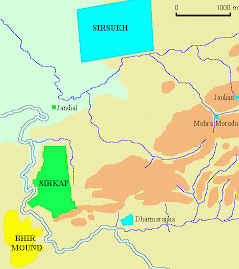
Far away from the noise of the city of Taxila-Sirsukh, the monastery and university of Jaulian was situated on a mountain top that rises some 100 meters above the surrounding country - on a cool and dustless site.
Like other monasteries in Gandara and the Punjab, the cells surrounded a rectangular central court with verandas. It was surrounded by a bathroom (jantâghara), an assembly hall (upasthâna-sâlâ), a store-room (koshthaka), a kitchen (agni-sâlâ), a refectory (upâhâra-sâlâ), and a latrine (varchah-kutî). There was no well at Jaulian, but there were sources at the foot of the hill.
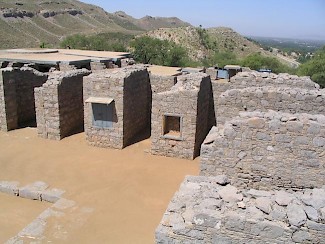
Jaulian does not really differ from the settlement at Mohra Moradu, which is just over a kilometer away.
The settlement had been restored shortly before it was abandoned, after the invasion of the White Huns at the end of the fifth century. Therefore, the decorations are better preserved than those at Mohra Moradu, but unfortunately, they are of a poorer quality.
The main stupa is badly damaged, but is surrounded by twenty-one beautifully decorated votive stupas. They betray Greek influence, although no longer as obviously as in Sirkap, which was founded by a Bactro-Greek king. The motifs that had been adapted by the Buddhist artists of the second and first centuries BCE, had by now become part of the Punjab culture, and artists made variations. Still, you need only a little bit of imagination to recognize that the decorated cube in the center of one of the photos below is derived from a Greek, Corinthian column.
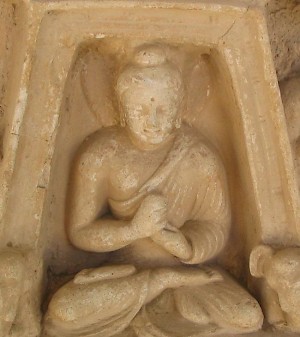
There are many reliefs of teaching Buddhas.
Their feet are naked for walking and they cut their garments to resemble the exomis
writes the Greek author Philostratus in his vie romancée of the Greek philosopher Apollonius of Tyana, who is reported to have visited Taxila.note An exomis is a Greek mantle that leaves a shoulder and an arm uncovered.
The monastery was recovered after the invasion of the White Huns and must have been in used after about 530, but is is not known when it was abandoned.
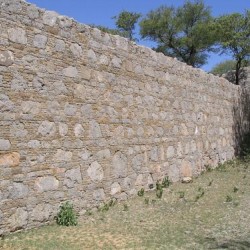 Jaulian, wall |
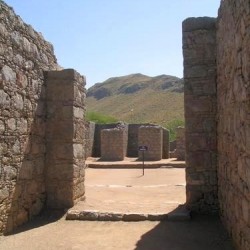 Jaulian, entrance |
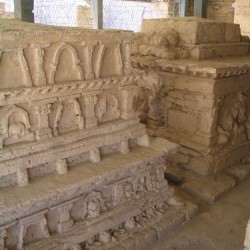 Jaulian, votive stupa (1) |
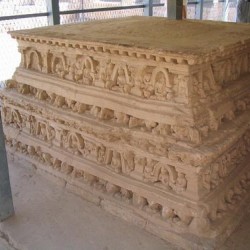 Jaulian, votive stupa |
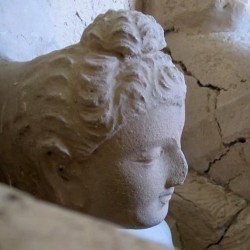 Jaulian, head of a Buddha |
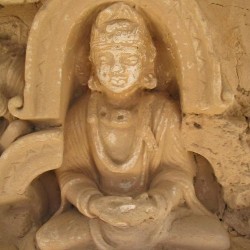 Jaulian, Buddha |
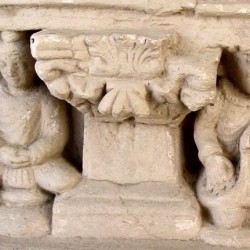 Jaulian, Corinthian capital |
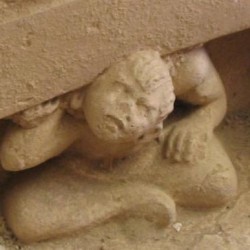 Jaulian, small sculpture |